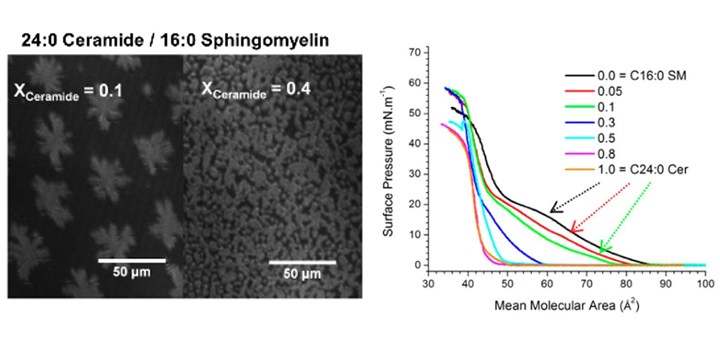Fanani & Maggio, Biophy Review 2017
A rather widespread idea on the functional importance of sphingolipids in cell membranes refers to the occurrence of ordered domains enriched in sphingomyelin and ceramide that are largely assumed to exist irrespective of the type of N-acyl chain in the sphingolipid. Ceramides and sphingomyelins are the simplest kind of two-chained sphingolipids and show a variety of species, depending on the fatty acyl chain length, hydroxylation, and unsaturation. Abundant evidences have shown that variations of the N-acyl chain length in ceramides and sphingomyelins markedly affect their phase state, interfacial elasticity, surface topography, electrostatics, and miscibility, and that even the usually conceived “condensed” sphingolipids and many of their mixtures may exhibit liquid-like expanded states. Their lateral miscibility properties are subtlety regulated by those chemical differences. Even between ceramides with different acyl chain length, their partial miscibility is responsible for a rich two-dimensional structural variety that impacts on the membrane properties at the mesoscale level. In this review, we will discuss the miscibility properties of ceramide, sphingomyelin, and glycosphingolipids that differ in their N-acyl or oligosaccharide chains. This work is a second part that accompanies a previous overview of the properties of membranes formed by pure ceramides or sphingomyelins, which is also included in this Special Issue.
Autores: Fanani, ML & Maggio B
Artículo: Fanani ML & Maggio B, Biophysical Reviews (2017), Oct;9(5):601-616



